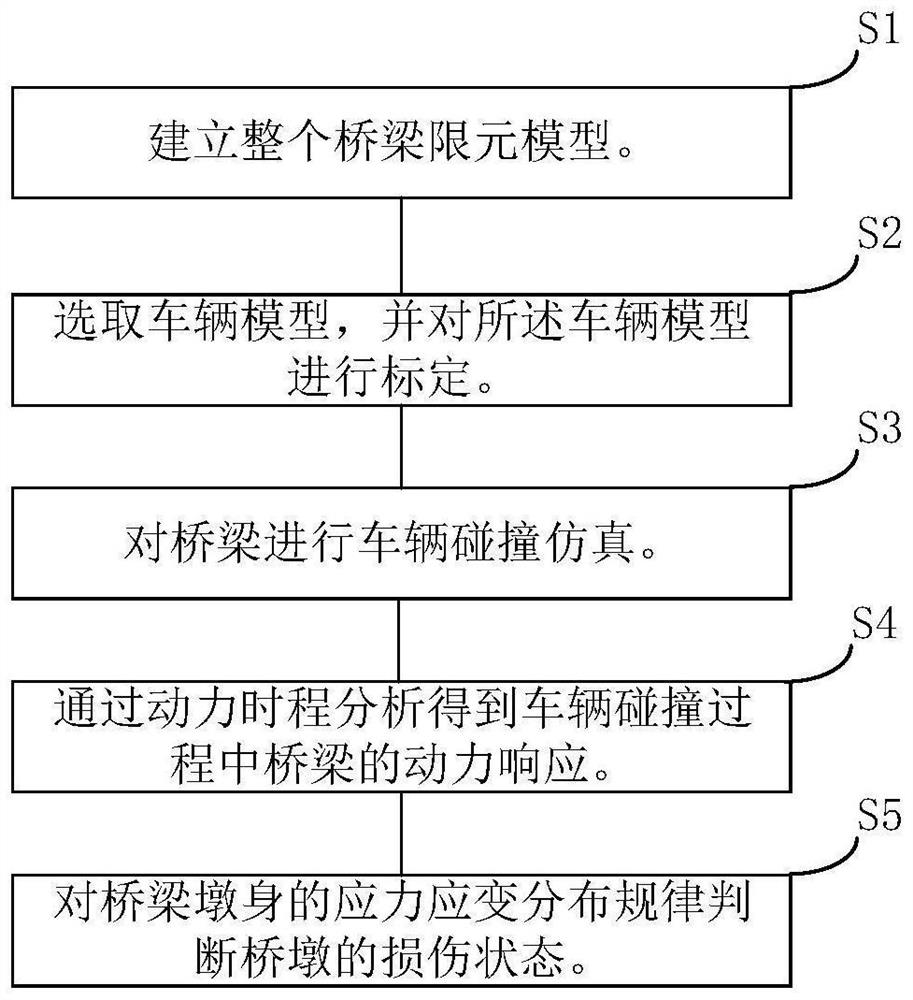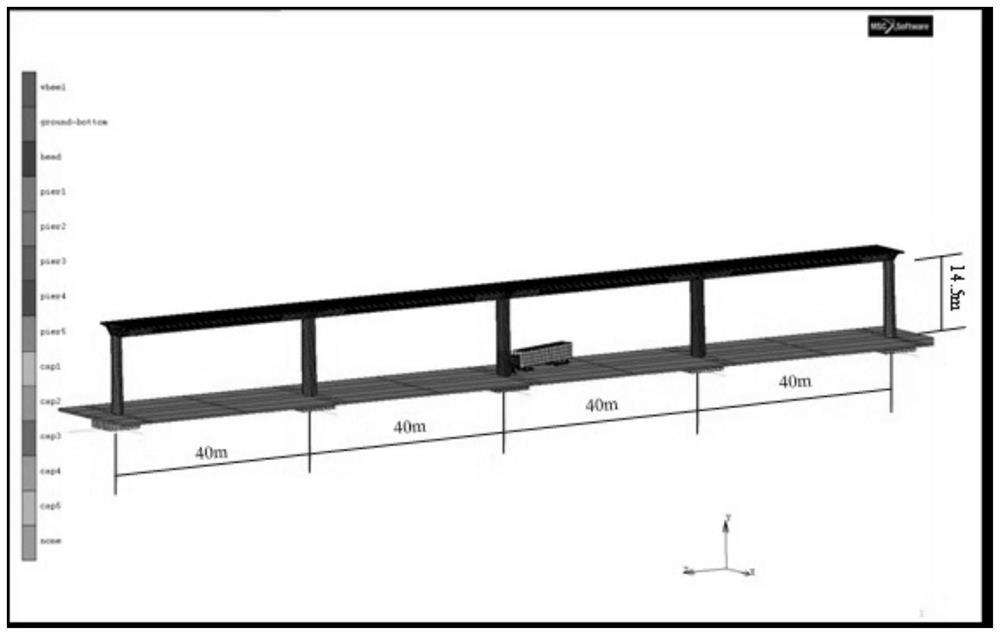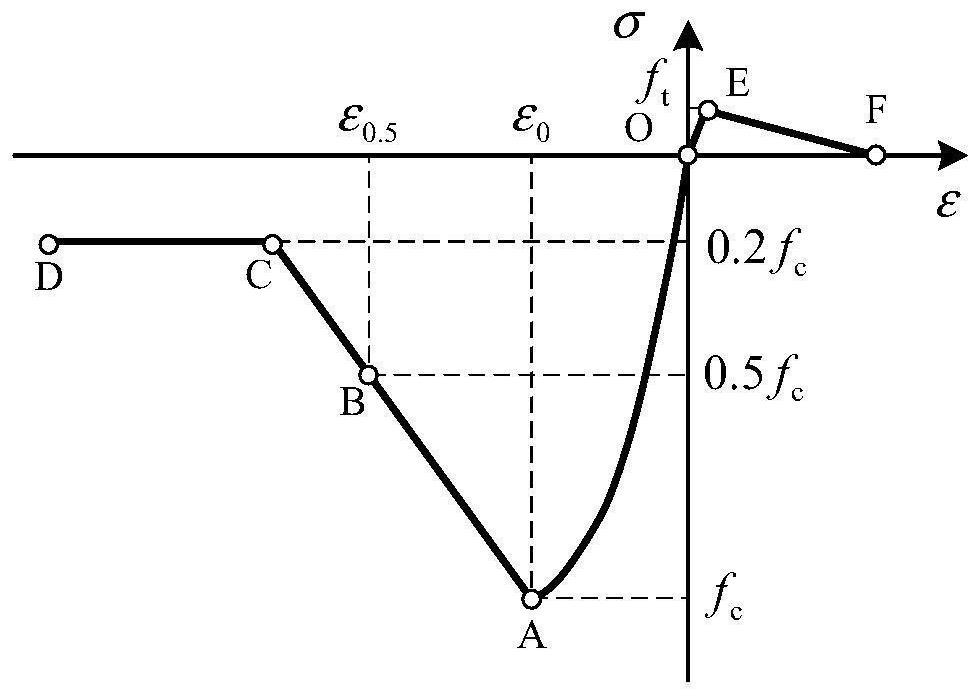Single thin-wall continuous rigid frame bridge pier collision simulation method
A simulation method and technology for bridge piers, which are applied in design optimization/simulation, CAD numerical modeling, instruments, etc., can solve problems such as affecting the normal passage of road vehicles, hindering smooth traffic, and causing injuries to vehicles.
- Summary
- Abstract
- Description
- Claims
- Application Information
AI Technical Summary
Problems solved by technology
Method used
Image
Examples
Embodiment 1
[0039] This embodiment provides a single thin-walled continuous rigid frame pier collision simulation method, such as figure 1 shown, including steps:
[0040] S1. Establish the finite element model of the whole bridge.
[0041] In this embodiment, a 4×40m continuous girder bridge is selected as the research object, and a finite element model of the whole bridge is established, as shown in figure 2 shown. The model has a total of 33135 elements, including superstructure, piers and caps. The superstructure is a variable section box girder. The pier body is a rectangular solid section with a pier height of 14m. The cross-bridge width of the pier section varies with the pier height. The root is 3m, the top is 2.4m, the thickness of the side pier is 0.8m, and that of other piers is 1.4m.
[0042] In order to consider the influence of soil-junction interaction on the impact response, a 6-DOF spring is used at the bottom of the cap, and the spring stiffness is shown in Table 1....
PUM
 Login to View More
Login to View More Abstract
Description
Claims
Application Information
 Login to View More
Login to View More - R&D
- Intellectual Property
- Life Sciences
- Materials
- Tech Scout
- Unparalleled Data Quality
- Higher Quality Content
- 60% Fewer Hallucinations
Browse by: Latest US Patents, China's latest patents, Technical Efficacy Thesaurus, Application Domain, Technology Topic, Popular Technical Reports.
© 2025 PatSnap. All rights reserved.Legal|Privacy policy|Modern Slavery Act Transparency Statement|Sitemap|About US| Contact US: help@patsnap.com



